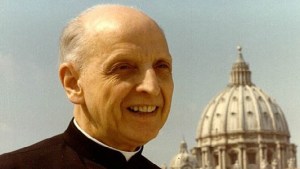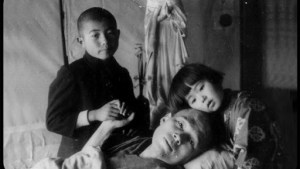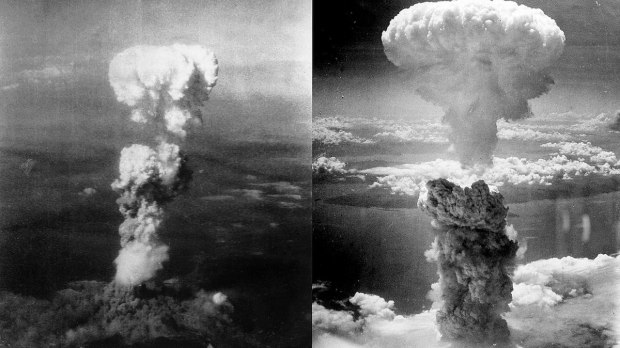August 6 is the liturgical Feast of the Transfiguration of Christ. On that date in 1945, the transfigured face of God, reflected in His children, was disfigured with the devastating explosion of the atomic bomb over Hiroshima, Japan, which exterminated nearly 140,000 men, women, and children.
Jesuits in Hiroshima
Nonetheless, there were miracles among the destruction. Roughly 4.5 km from the epicenter of the blast, the Nagatsuka Jesuit novitiate remained standing. These Jesuits went down in history as the Hiroshima Eight.
They survived the explosion that had instantly killed 86% of the people in an eight block radius. While some of them lived into old age, many of these Jesuits were affected by the radiation and had various health complications.
One of the eight, Fr. Hubert Schiffer, was 30 years old on that August 6, 1945. He had celebrated the Holy Mass of the Feast of the Transfiguration, and had just sat down to eat breakfast when, in his own oft-quoted words, “Suddenly, a terrific explosion filled the air with one bursting thunderstroke. An invisible force lifted me from the chair, hurled me through the air, shook me, battered me, whirled me ’round and ’round like a leaf in a gust of autumn wind.”
The Franciscan Convent of Nagasaki, the Japanese capital of Catholicism
On August 9, 1945, another atomic bomb was dropped—this time on Nagasaki, the city known as the Japanese capital of Catholicism since nearly two-thirds of Japan’s Catholics lived there. Nagasaki was devastated. The Franciscan Convent built by St. Maximilian Kolbe, however, remained standing.
The Polish saint, martyred in the concentration camp at Auschwitz during that same war, had decided to build the convent in a location that many thought was poorly chosen because it was not near the center of the city. Despite this criticism, Maximilian insisted on a plot of land located behind a mountain.
It was that mountain, in fact, that protected the convent when the atomic bomb destroyed the city, killing nearly 70,000 people.
In the midst of such horrible death and destruction, God protected those missionaries, but surely not only for their own sake. They lived so they could minister to the injured, sick, and dying from the attack. They lived so they could be witnesses to the world of the horrors of war and specifically of nuclear weapons, witnesses to God’s power and mercy, and witnesses to the importance and power of prayer.

Read more:
Jesuit Fr. Arrupe, who ministered to victims in Hiroshima. on road to canonization

Read more:
The Story of the Catholic Convert Who Survived Nagasaki

